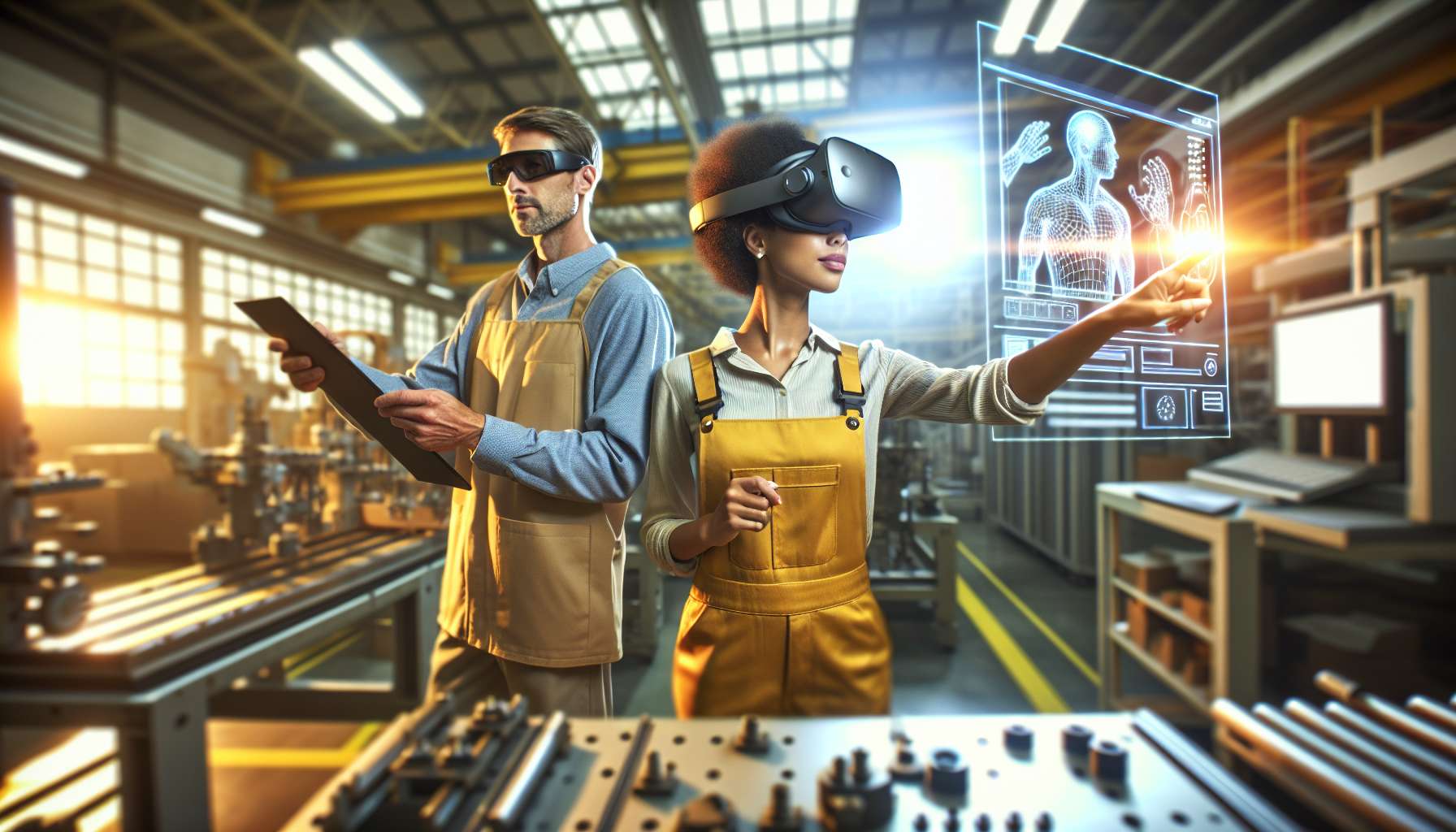Unlocking Efficiency: How Augmented Reality is Transforming Manufacturing
Augmented Reality (AR) has emerged as a game-changing technology in various industries, and manufacturing is no exception. By seamlessly blending the physical and digital worlds, AR is revolutionizing the way manufacturing processes are executed, leading to significant improvements in efficiency, productivity, and overall performance. In this article, we will explore how AR is transforming manufacturing efficiency and uncover the potential it holds for businesses in this sector.
Streamlining Assembly and Training Processes
One of the key areas where AR is making a remarkable impact is in assembly and training processes. Traditional manufacturing assembly lines often rely on complex manuals and training sessions, which can be time-consuming and prone to errors. With AR, workers can access real-time, step-by-step instructions and visual cues directly in their field of view, eliminating the need for bulky manuals and reducing the learning curve.
AR-powered training modules allow new employees to quickly grasp complex procedures, reducing the time required for onboarding. By overlaying digital information onto physical objects, AR enables workers to identify and rectify errors in real-time, minimizing costly mistakes and rework. This streamlined approach not only enhances efficiency but also improves the overall quality of the manufacturing process.
Enhancing Maintenance and Troubleshooting
Maintenance and troubleshooting are critical aspects of manufacturing that can significantly impact efficiency. AR provides technicians with a powerful tool to streamline these processes and reduce downtime. By wearing AR-enabled devices, technicians can access relevant information, such as equipment manuals, schematics, and diagnostic data, without having to refer to physical documents or consult experts.
AR overlays digital information onto the physical equipment, guiding technicians through maintenance procedures and highlighting potential issues. This real-time support enables faster and more accurate troubleshooting, minimizing equipment downtime and maximizing productivity. Additionally, AR can facilitate remote collaboration, allowing experts to guide on-site technicians through complex repairs, further reducing response times and costs.
Optimizing Inventory Management
Efficient inventory management is crucial for manufacturing operations, as it directly impacts production timelines and costs. AR offers innovative solutions to optimize inventory management processes, ensuring that the right components are available at the right time.
By leveraging AR, workers can visualize digital overlays of inventory data, such as stock levels, locations, and reorder points, directly on the physical warehouse or storage area. This real-time visibility enables accurate inventory tracking, reducing the risk of stockouts or excess inventory. AR can also guide workers through optimized picking routes, minimizing travel time and improving overall efficiency in the warehouse.
Improving Quality Control and Inspection
Quality control and inspection are critical stages in the manufacturing process to ensure that products meet the required standards. AR is revolutionizing these processes by providing real-time visualizations and data overlays that enhance accuracy and efficiency.
AR-powered inspection tools can compare digital models or specifications with physical products, highlighting any deviations or defects. This enables inspectors to quickly identify and address issues, reducing inspection time and improving overall quality control. Furthermore, AR can provide real-time analytics and insights, allowing manufacturers to identify patterns and trends in quality data, leading to proactive improvements in the production process.
The Future of Manufacturing Efficiency with AR
The potential of AR in manufacturing efficiency is vast and continues to expand. As the technology evolves, we can expect even more advanced applications, such as predictive maintenance, real-time performance monitoring, and collaborative design reviews. With the integration of Artificial Intelligence (AI) and Internet of Things (IoT), AR will become an integral part of the smart factories of the future.
Manufacturers who embrace AR early on will gain a competitive edge by unlocking new levels of efficiency, reducing costs, and improving overall productivity. The transformative power of AR in manufacturing is undeniable, and businesses that harness its capabilities will be well-positioned to thrive in the rapidly evolving industrial landscape.
Are you ready to unleash the power of AR in your manufacturing operations? Explore the possibilities and take the first step towards a more efficient future.





